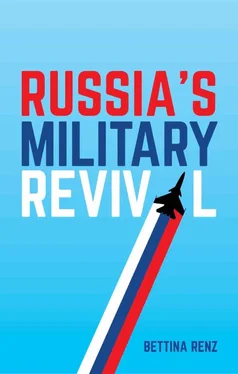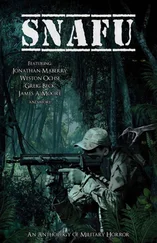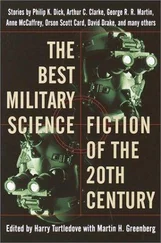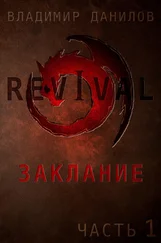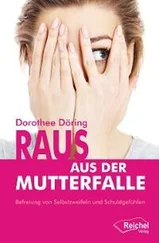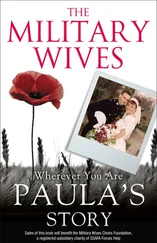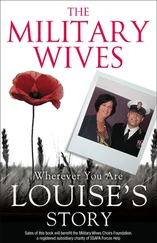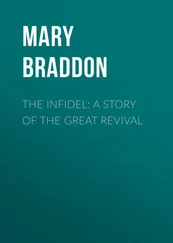Improvements in Russia’s military capabilities and Moscow’s growing confidence in using armed force as an instrument of foreign policy are significant and this poses challenges to its neighbours and to the West. However, the precise nature of these challenges is not as straightforward as often implied. The book’s arguments are developed in five chapters in order to provide detailed context for an informed assessment of recent events. The topics of these chapters are the role of the military in Russian foreign policy in the past and today, reforms of the Russian armed forces since the early 1990s, the significance of the force structures as an important component of the country’s military establishment, Moscow’s uses of military force in wars and conflicts since the end of the Cold War, and developments in the country’s military thinking.
A contextualized analysis of Moscow’s reasons for strengthening its armed forces, and of the significance of this for the security of both its neighbours and of the West, is not only of interest as an exercise of academic inquiry. It also has substantial policy relevance. Following the annexation of Crimea, it has become a widely accepted fact that a lack of capacity to understand political developments in contemporary Russia caused the West to ‘sleep walk’ into the current crisis (House of Lords 2015: 6; Monaghan 2016: 26–7). A contextualized study of Russia’s military revival contributes to a better understanding of the Kremlin’s thinking and actions, which can help to ensure that any potential future actions will come as less of a surprise. A better understanding of the reasons for, and implications of Russia’s military revival is also significant for policies adopted by the West vis-à-vis a more assertive Kremlin. If such policies are insufficiently informed by an awareness of the motivations driving Russian behaviour, they could fail and inadvertently lead to spiralling tensions. A contextualized understanding of the military revival is essential not to justify Moscow’s actions, but rather it is vital to inform policy and decision makers in the West where to go from here. As Carolina Vendil Pallin noted, ‘what the West does will matter… In spite of the fact that change must come from Russia, the policy response of the EU and NATO matters – and it does so irrespectively of how events in Russia develop’ (2015: 14, 20).
The book’s five chapters each address in detail an aspect of military power that is important for an informed understanding of Russia’s military revival. The chapters have been written so they can also be read individually. Read as a whole, they provide a comprehensive context for a better understanding of the timing, intentions and scope of Moscow’s efforts to restore its country’s armed forces and of the implications this has for international security.
Chapter 1outlines the role of military power in Russian foreign policy in the past and today. As such, the chapter delivers the historical background of the book. The chapter is structured around four factors, all of which have been important in shaping foreign policy since the time of the Russian Empire. These are great power status, sovereignty, imperialism/imperial legacy, and multilateralism. Although these factors are not the only ‘persistent factors’ in Russian foreign policy, they are particularly salient for explaining the role of military power within it. The chapter demonstrates that not only has a strong military always been an essential component in Russia’s self-perception as a great power, but also that Moscow has always viewed and used the armed forces as a flexible tool of foreign policy. Highlighting relevant patterns and developments in the past, the chapter suggests that preparation for offensive war and expansion is unlikely to be the most important reason for the recent military revival.
Chapter 2traces Russia’s struggle to transform what was left of the former Soviet military into a force fit for the twenty-first century. It shows that the neglect of the armed forces during the Yeltsin years was the result of a complex combination of political, societal and financial factors and not the result of a principled decision. Central elements of the 2008 modernization programme were debated since the early 1990s and Moscow never abandoned its ambition to be a global military power. Aided by a much improved economic situation, the Russian military’s fortunes started to turn when Putin became president and made the military reform agenda a priority. The chapter details the impressive advances in Russian military capabilities that have been made since 2008 and were demonstrated on a limited scale in Crimea and in Syria. It also shows, however, that the modernization process is far from complete and Russia is still a long way off meeting its goal of parity with other leading powers. Important obstacles continue to stand in the way. These include ongoing problems with maintaining the desired level of manpower and the defence industry’s inability to deliver the quality of technology required for competing with the world’s most advanced nations. Russia’s deepening economic crisis since 2009 has also meant that the affordability of its ambitions is far from certain.
Chapter 3provides an overview of Russia’s force structures. These include, amongst others, the Interior Ministry (MVD), the Ministry for Emergency Situations (MChS), the Federal Security Service (FSB) and the National Guard Service (FSNG). The force structures form an important component of the country’s military establishment, but are often ignored in analyses, because they do not fit easily into Western frameworks. The chapter argues that the fate of the force structures since 1991 offers important insight into the timing and reasons for the revival of Russian military power in recent years. The creation of the force structures was determined in part by the need to build capabilities for dealing with a range of new security challenges that the regular armed forces were ill-equipped to deal with. Force structure personnel were used in various low-intensity missions since the 1990s and have also participated in multilateral security cooperation, including with NATO, throughout the 2000s. Political motivations, however, have been the most important reason for maintaining these structures, which are tasked predominantly with internal security. The availability of force structures loyal and subordinated directly to the president was as important for Yeltsin as it is for Putin today. They are essential for ensuring internal order and regime stability, which are increasingly viewed as being under threat and thus as a matter of national security.
Chapter 4discusses the annexation of Crimea and the intervention in Syria within the context of the Kremlin’s other uses of military power since the early 1990s. It argues that there is little evidence to suggest a fundamental change in Moscow’s views on the utility of force, or that the desire to expand its territory or to confront the West in a bid for domination have become the major drivers. Since the early 1990s, Russia has been using military force in pursuit of a variety of policy objectives. With regard to its neighbourhood, the imperial legacy has informed its decision to use force in the region since the end of the Cold War. However, chance and contingency, status concerns, insecurity and strategic interests have also been important. If patterns from the past are anything to go by, further expansion is fairly unlikely, because more indirect forms of domination offer a lever of control that is more valuable than adding more territory to an already vast state. With regard to the West, Russia has become more assertive in pursuing an independent foreign policy, even if this risks a breakdown in relations. That said, Russia’s approach to the West continues to be characterized by a complex interplay of cooperation and conflict. It desires inclusion, but does not avoid confrontation when it feels that its views are not taken into account.
Читать дальше
